Genes reveal traces of common recent demographic history for most of the Uralic-speaking populations
The genetic origins of Uralic speakers from across a vast territory in the temperate zone of North Eurasia have remained elusive. Previous studies have shown contrasting proportions of Eastern and Western Eurasian ancestry in their mitochondrial and Y chromosomal gene pools. While the maternal lineages reflect by and large the geographic background of a given Uralic-speaking population, the frequency of Y chromosomes of Eastern Eurasian origin is distinctively high among European Uralic speakers. The autosomal variation of Uralic speakers, however, has not yet been studied comprehensively.
The genetic diversity of peoples of the Ural language family living in Europe and Siberia are strongly influenced by a geography. However, the genetics from Estonia and Russia found common genetic component in Ural-speaking populations. Presumably, it originated from West Siberia. This means that the Ural family languages have spread over a wide area due to population migrations.
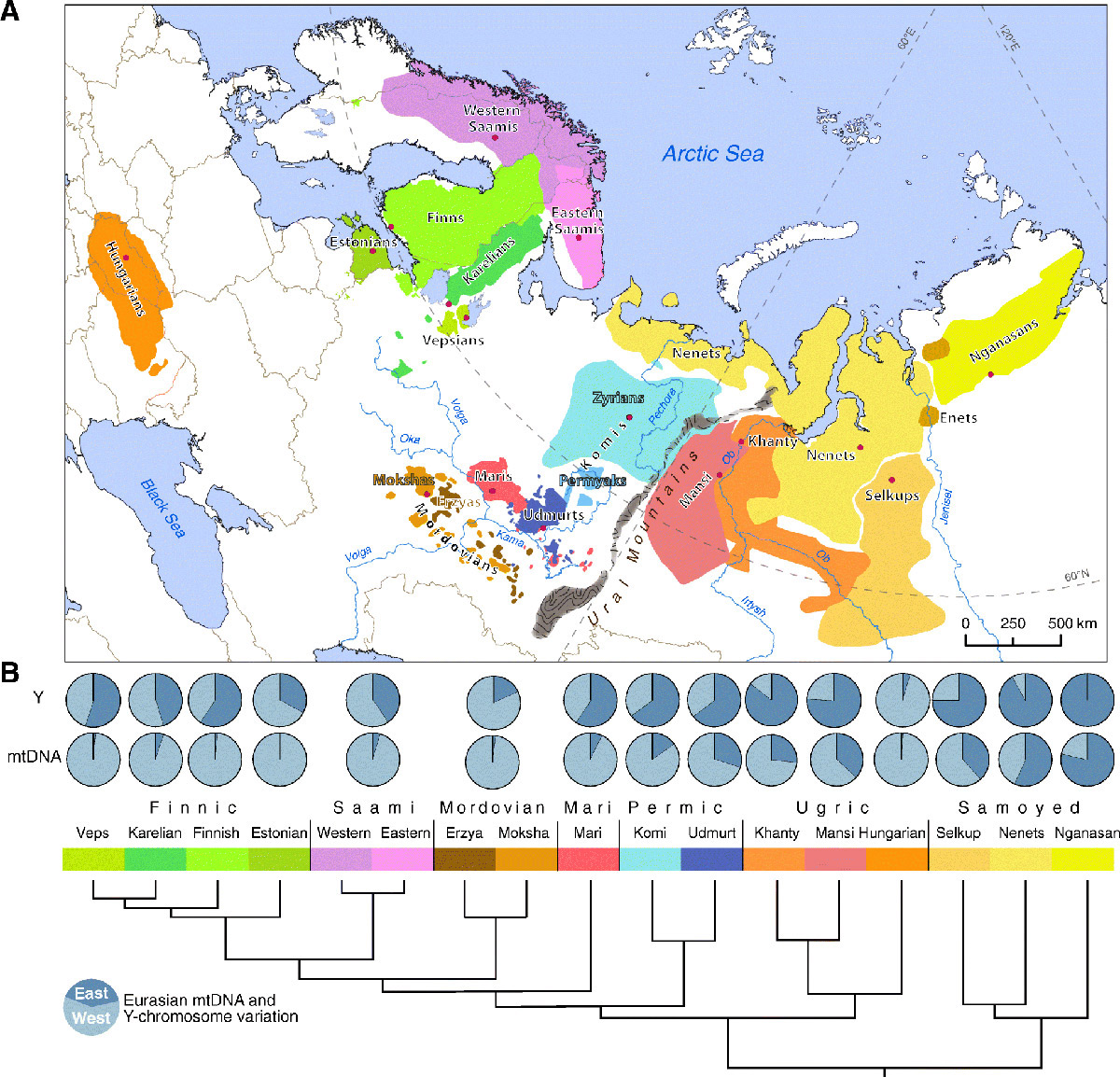
Geographical location of the Ural-speaking populations. A variety of Uralic languages and linguistic tree
of their relationship. The color on the map corresponds to the color of the language group
[Credit: Kristiina Tambets et al. 2018]
The Ural family languages are the third after Indo-European and Turkic most common in Northern Eurasia. According to linguists, the Ural family languages were built from a single proto-language 6000-4000 years old, which was divided into two large branches: Finno-Ugric and Samoyed languages. Ural-speaking peoples live on giant territories from Baltics to West Syberia and include Finns and Estonians, Karelians and Hungarians, Mordovian Erzya and Moksha, West Siberian Khanty and Mansi, Nenets and others. Do this different peoples share common roots and biological history? And how did these related languages spread over such a wide territory? This questions are addressed to genetics.
The authors of a recent paper in BMC Genome Biology tried to answer them. The international research team was coordinated by the genetics from Estonian Biocenter of the Tartu University, working in long-term cooperation with Russian colleagues from Moscow, Novosibirsk, Ufa and Arkhangelsk. Researchers analyzed the geographical location of the Ural-speaking populations and constructed a map, showing where different languages of the Ural family were spoken.
The scientists for the first time created a database of genetic data for the entire or full genome. The base includes more than 500 thousand positions for representatives of 15 Ural-speaking populations: from Finns to Nenets. Scientists have mapped the position of the Ural-speaking populations in the genetic space of Eurasia. These positions stretched from left to right in accordance with their geography: from west to east. Therefore, the authors concluded that geography is the main factor behind the genetic diversity of Ural-speaking populations.
The researchers also applied another standard analysis method for decomposing the genome into components derived from ancestors. It showed that the majority of the Ural-speaking populations except for Hungarians have a small genetic component in common. Scientists associate its origin with Western Siberia. If such fragments are found in people from different populations, they are likely to have a common ancestor, and if two populations have many common fragments, the are relatives. This way it turned out that many Ural-speaking populations are closer to other Ural-speaking populations, even geographically distant, than to their geographical neighbors who speak other languages.
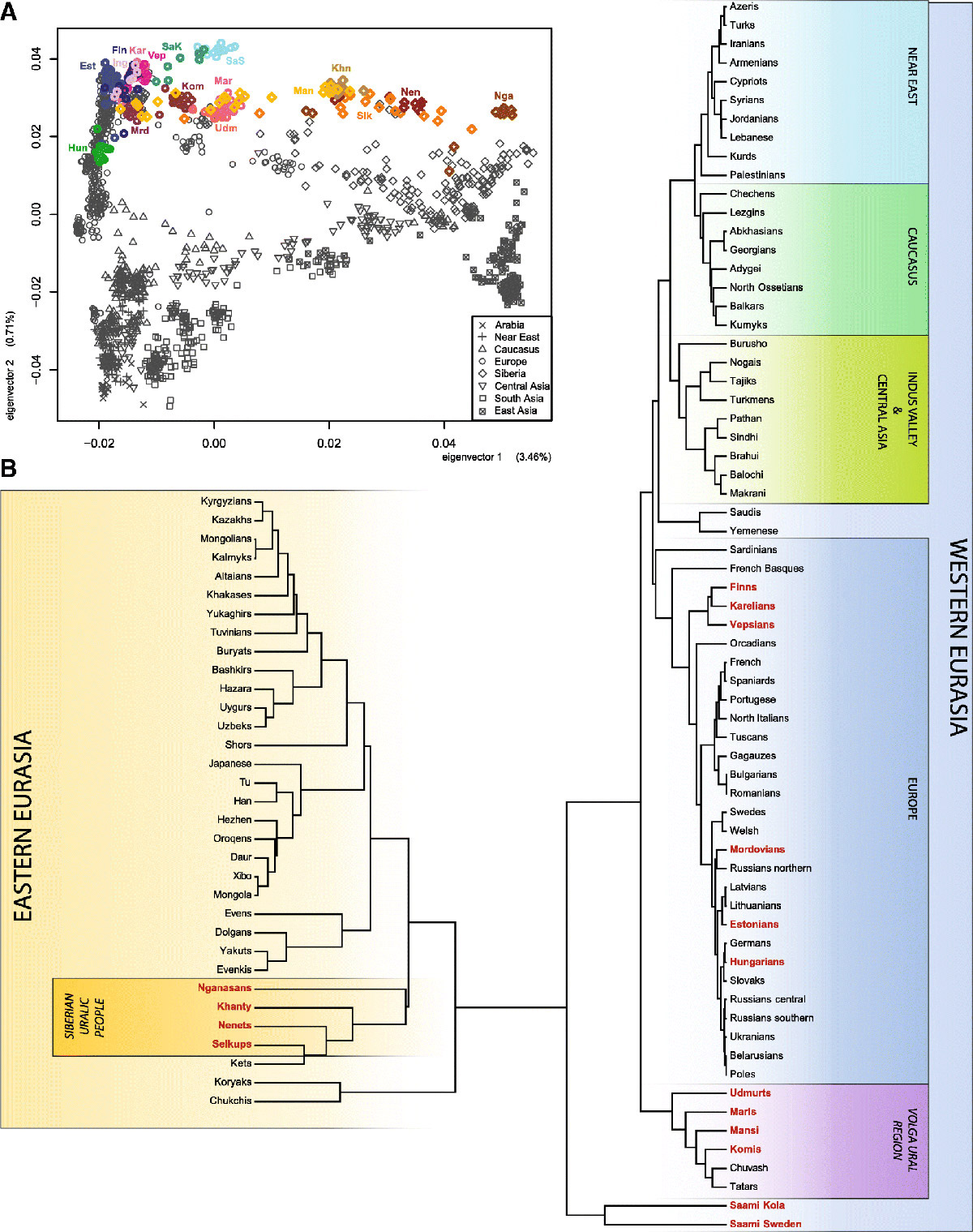
Thus, Mari and Udmurts were closer to the Khanty and Mansi, living on the other side of the Urals, than to the neighboring Tatars, Bashkirs, Chuvash. At the same time, Finns and Sámi showed greater commonality with the Volga Mari, Komi and Udmurts, and even with West Siberian Khanty and Mansi, than with geographically close Swedes, Latvians, Lithuanians and northern Russians. However, there are exceptions such as Hungarians and Mordovian peoples.
Since the researchers wanted to see if there were any correlations between linguistic, geographic, and genetic data for Ural-speaking populations, they took lexical distances between languages ??(calculated by linguists proportion of common words in a special list of stable vocabulary), geographical distances between populations and, finally, genetic distances between populations, which serve as a measure of genetic similarity. It turned out that all these data types have a positive correlation, which indicates their interdependence.
The common genetic component found in the Ural-speaking populations indicates that they share common history. Apparently, the spread of the Uralic languages ??was associated with the spread of genes or with migrations. Scientists consider the center where the migrating groups originated to be placed in Western Siberia. Thus, in their opinion, the peoples of the Ural linguistic family are linked by genetic roots of Western Siberian origin.
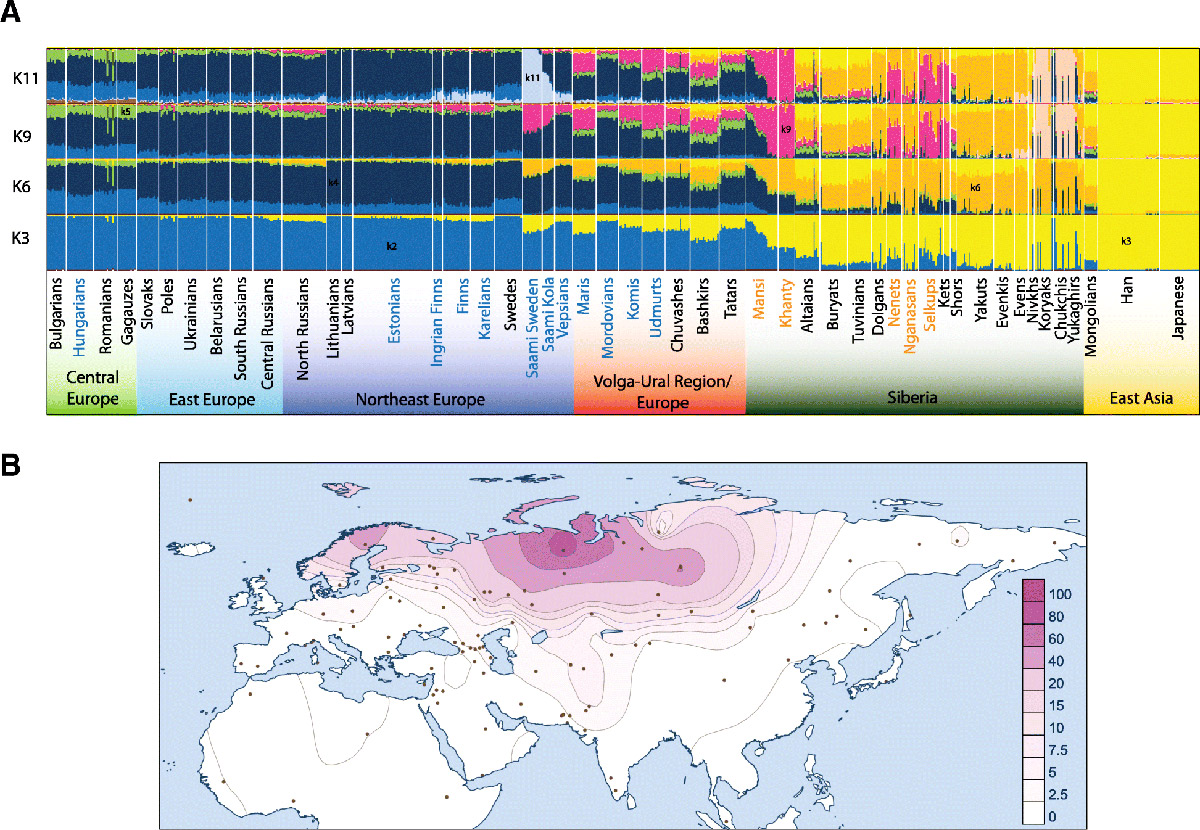
"This is the third joint article by Estonian Biocenter and Russian scientists," commented Dr. Oleg Balanovsky, the head of Genomic Geography Laboratory of the Institute of General Genetics. "The first was devoted to the Turkic-speaking peoples, the second to the Balto-Slavic peoples, and the third to the Ural-speaking ones. In all cases, it was shown that the geographic factor plays the main role in the formation of the gene pool, and linguistic kinship fades into the background. At the same time, the analysis of the Turks and the Ural-speaking populations revealed a common component in their gene pool. This small but real share can be connected with the people through whom these languages ?? were spread initially."
"Yet, the article about the Ural-speaking peoples does not answer all questions," continues Oleg Balanovsky. "The thousand-year intrigue remains unresolved: the origin of the Hungarians, who historically and linguistically are descendants of the Magyars, relatives of the Ugrians who conquered the territory of present Hungary in the 9th century. However, genetically modern Hungarians are indistinguishable from their geographical neighbors and do not show similarities with other Ugric peoples (Khanty and Mansi). Perhaps the genetic trail of the Ugric origin of the Hungarians can be traced with the help of ancient DNA. Such a work is already in progress."
Source: Akson Russian Science Communication Association [October 15, 2018]

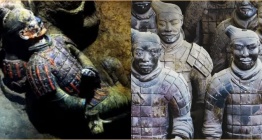


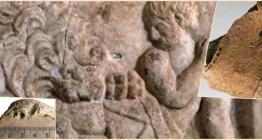
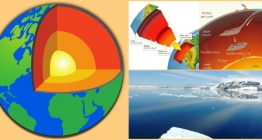


 Museum Boijmans Van Beuningen'deki Rothko tablosu bir çocuk tarafından çizildi!
Museum Boijmans Van Beuningen'deki Rothko tablosu bir çocuk tarafından çizildi! 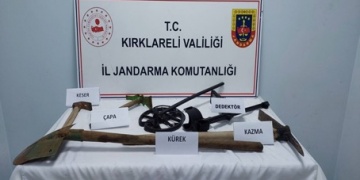 Kırklareli merkezli 3 ilde kaçak kazı operasyonunda 14 defineci yakalandı
Kırklareli merkezli 3 ilde kaçak kazı operasyonunda 14 defineci yakalandı 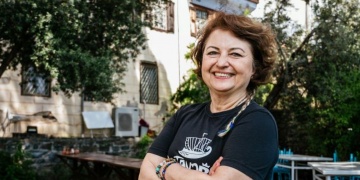 Antandros Antik Fest 16 Mayıs'ta arkeoloji, tarih ve kültür dostlarını bekliyor
Antandros Antik Fest 16 Mayıs'ta arkeoloji, tarih ve kültür dostlarını bekliyor 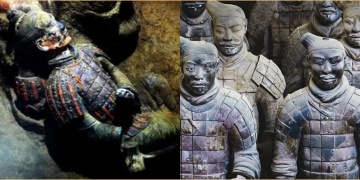 Terrakotta Ordusu'na orijinal boyaları korunmuş yeni savaşçı heykelleri katıldı
Terrakotta Ordusu'na orijinal boyaları korunmuş yeni savaşçı heykelleri katıldı 




